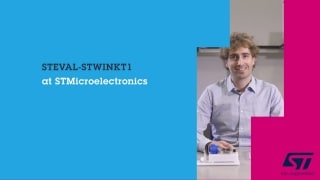Our products and solutions
ST offers industrial MEMS for vibration and temperature monitoring, ultrasound detection and other sensing applications. They are reliable, stable and tailored for industrial equipment as they provide up to 80kHz mechanical frequency bandwidth and can operate in environments up to 105°C. ST's sensors are also low power, compact and offer high noise immunity, thus enabling best-in-class, compact and cost-effective Industry 4.0 wired and wireless sensor network solutions.
ST offers a large portfolio of low power to high-performance MCU: STM32 Arm® Cortex® M4/M33/M7-based microcontrollers which, when used together with wired and wireless transceivers and SoCs, enable multiple network technologies and protocols.
Smart sensors are designed for data collection and data logging, with the purpose of enabling pre-processing and advanced algorithms such as statistics, Neural Networks, and Machine Learning algorithms.
To answer developer needs to implement Machine Learning, ST introduced different options:
- a class of sensors with a Finite State Machine acting as a Machine Learning Core
- STM32Cube.AI tool, which is an extension of STM32CubeMX software, that allow users to automatically convert pre-trained Neural Networks into optimized MCU code
Developers can also integrate optimized libraries in their project in order to distribute AI algorithms between the sensor and STM32 MCU, thereby enhancing application performance and optimizing power consumption.
Battery-less smart sensor nodes can be therefore implemented with low power sensors, power-efficient microcontrollers and with dedicated power management products, offering best-in-class consumption features.
To further complement ST’s offer and break down adoption barriers related to the design and wide scale implementation of smart sensor nodes, the following hardware and software tools are available to support developers in their deployment.
- Reference designs and development kits for wired and wireless smart sensor nodes
- Software and function packs to implement vibration analysis in frequency and time domains, and collect ultrasound and environmental data
- Specific software utilities as well as high-speed data loggers and cloud applications provide an example of a complete sensor-to-cloud architecture and support data scientists in the collection and offline analysis of data as well as the development of algorithms.
ST’s network of Authorized Partners also complements ST’s offer with Machine Learning IPs and product industrialization tools to enable the large-scale implementation of industrial sensor nodes.


